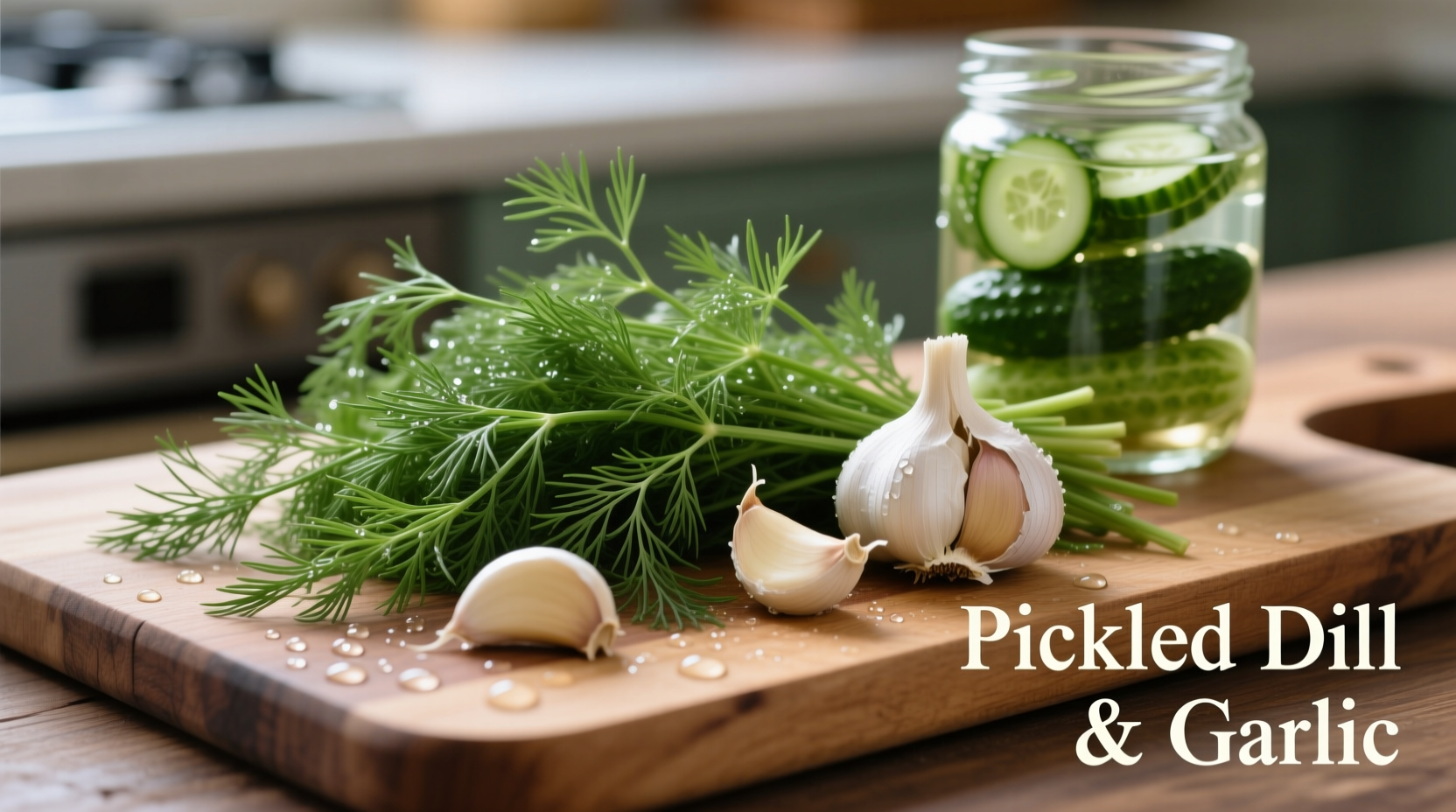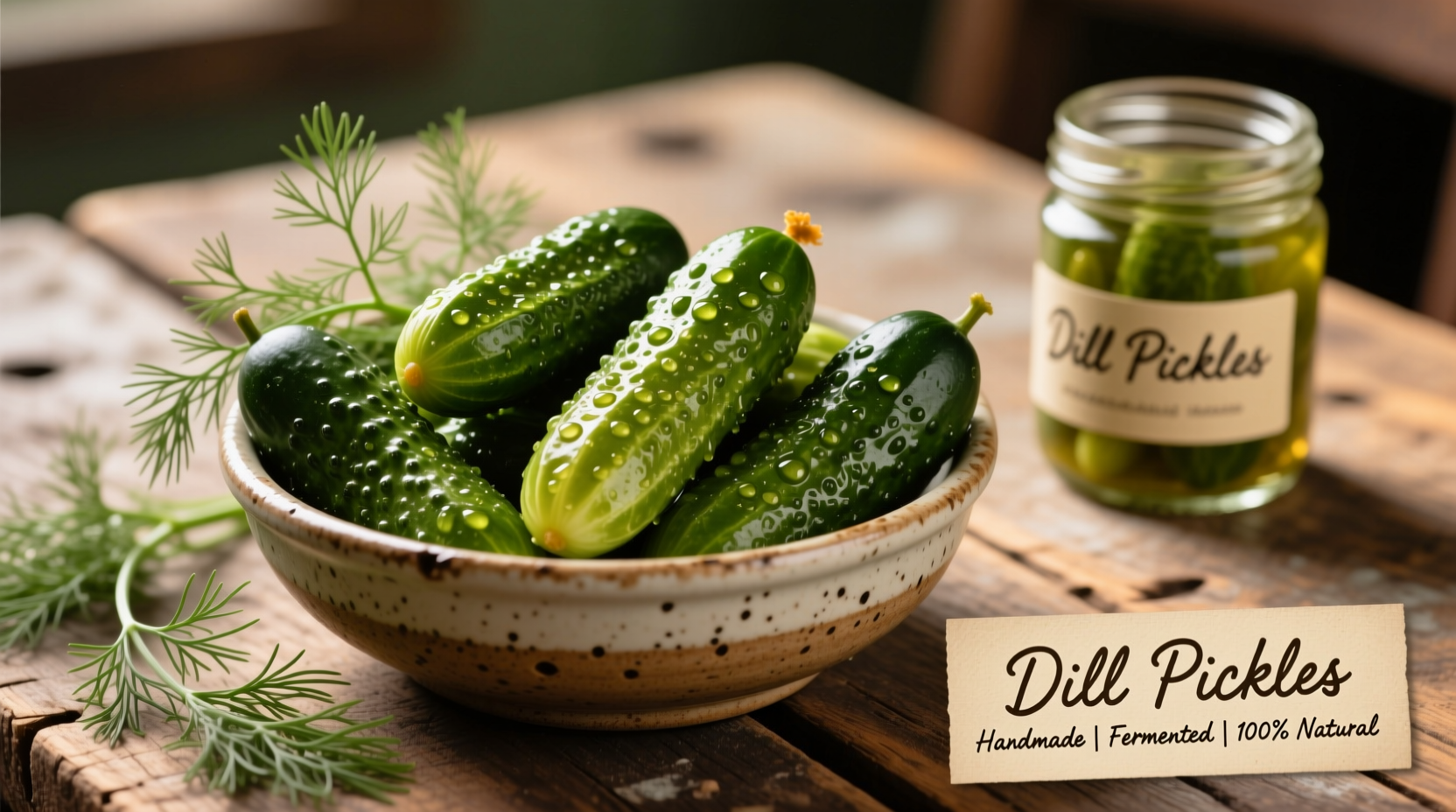The essential spices in dill pickles are dill weed or dill seed, garlic, mustard seed, coriander, and black peppercorns. These ingredients create the characteristic tangy, aromatic flavor while contributing to preservation through their natural antimicrobial properties.
What Makes Dill Pickles Taste Authentic?
When you bite into a crisp dill pickle, you're experiencing a carefully balanced symphony of spices that have been perfected over centuries. Understanding these ingredients isn't just about flavor—it's about food safety, preservation science, and culinary tradition. Let's explore exactly what goes into authentic dill pickles and why each component matters.

Your Essential Dill Pickle Spice Kit
Professional picklers and home canners agree on a core set of spices that define authentic dill pickle flavor. These aren't arbitrary choices—they're the result of generations of culinary refinement and food science.
Primary Flavor Builders
- Dill (weed or seed): The namesake ingredient providing that distinctive herbal aroma. Fresh dill weed delivers brighter flavor while dill seed offers more intense, concentrated notes.
- Garlic: Adds pungent depth and complexity. Fresh cloves work best—powdered garlic lacks the nuanced flavor profile.
- Mustard seed: Contributes subtle heat and helps maintain crispness through tannins.
Supporting Cast for Perfect Balance
- Coriander: Citrusy notes that brighten the overall flavor profile
- Black peppercorns: Provide gentle warmth without overwhelming heat
- Bay leaves: Add earthy depth (used in some regional variations)
- Red pepper flakes: Optional for those who prefer spicy dill pickles
| Spice | Traditional Amount per Quart | Primary Function | Flavor Contribution |
|---|---|---|---|
| Dill (fresh) | 2-3 sprigs | Flavor base, antimicrobial | Grassy, herbal, aromatic |
| Garlic | 1-2 cloves | Flavor complexity, preservation | Pungent, savory depth |
| Mustard seed | 1/4 tsp | Crispness, mild heat | Nutty, slightly pungent |
| Coriander | 1/4 tsp | Flavor balance | Citrusy, floral notes |
The Science Behind Spice Selection
Why these specific spices? It's not just about taste—food science explains why certain spices work perfectly for pickling. According to research published in the Journal of Food Science, dill contains monoterpenes that enhance the perception of sourness while providing mild antimicrobial properties. Mustard seed releases allyl isothiocyanate when combined with vinegar, creating an environment hostile to spoilage bacteria.
The USDA's Complete Guide to Home Canning emphasizes that proper spice selection isn't merely about flavor—it directly impacts food safety. "Spices like dill and garlic contain natural compounds that complement the preservative action of vinegar and salt," notes the guide. This scientific understanding transforms pickling from guesswork to a precise culinary science.
Historical Evolution of Dill Pickle Spices
Dill pickles have evolved significantly from their origins. This timeline reveals how spice combinations changed through history:
- 1600s-1700s: Early European recipes used primarily dill weed and salt, with vinegar as a later addition for preservation
- 1800s: Mustard seed and black pepper became standard additions as trade routes expanded
- Early 1900s: Garlic emerged as a key ingredient with Eastern European immigration to America
- 1940s: Commercial production standardized the "classic" dill pickle spice blend
- Modern era: Artisanal variations incorporate additional spices like coriander and red pepper flakes
This historical progression, documented in culinary archives like the National Center for Home Food Preservation, shows how practical preservation needs shaped today's flavor profiles.
Avoiding Common Spice Mistakes
Many home canners make critical errors with spices that compromise both flavor and safety:
- Using dried dill instead of fresh: Dried dill loses its characteristic flavor compounds—fresh is essential for authentic taste
- Substituting spice powders for whole spices: Whole spices release flavors gradually during processing; powders create uneven distribution
- Overloading garlic: Excessive garlic can create unsafe pH levels in pickles
- Adding spices at the wrong time: Some spices benefit from brief toasting before use to enhance flavor extraction
Perfecting Your Personal Spice Blend
Once you understand the fundamentals, you can customize your dill pickle spices. Start with the basic formula, then experiment with these adjustments:
- For extra-crisp pickles: Add 1/4 tsp grape leaves or oak leaves per jar (tannins help maintain firmness)
- For spicy dill pickles: Include 1-2 dried red peppers per quart
- For sweet dill variation: Add 1/2 tsp sugar per quart (traditional in some regional styles)
- For garlic-forward flavor: Roast garlic cloves before adding to jars
Remember that spice balance affects more than taste—it influences preservation. The National Center for Home Food Preservation recommends maintaining proper vinegar-to-water ratios regardless of spice variations to ensure food safety.
Storing Spiced Pickles for Maximum Flavor
Spice flavors continue developing after processing. For optimal taste:
- Wait at least 2 weeks before eating new batches—this allows flavors to fully meld
- Store in a cool, dark place (light degrades delicate spice compounds)
- Consume within 12 months for best flavor (spice compounds gradually break down)
- Refrigerate after opening to slow flavor degradation
Understanding these storage principles ensures your carefully crafted spice blend delivers perfect flavor from the first jar to the last.











 浙公网安备
33010002000092号
浙公网安备
33010002000092号 浙B2-20120091-4
浙B2-20120091-4